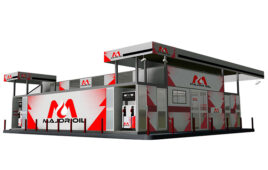 Consumer pessimism continues to deepen despite a second straight month of gas price declines.
Consumer pessimism continues to deepen despite a second straight month of gas price declines.
Nearly one in four consumers (23%) say that they are “very pessimistic” about the economy, tied for the highest level measured this year, according the latest monthly NACS Consumer Fuels Survey. This is also the fourth month in row of increasing consumer pessimism about the economy.
Overall, 65% of consumers say that they are pessimistic about the economy, despite a 22-cent drop in gas prices over the past month. This marks the second straight month that pessimism increased despite a drop in gas prices, reversing a trend that had held for the first eight months of the year when pessimism increased only when gas prices increased.
National events, as opposed to gas prices at the corner store, seem to be the factor driving the pessimism. The U.S. government shutdown certainly is on the mind of consumers. Nearly half of consumers (46%) say that the government shutdown has a “great impact” on their feelings about the economy; only 16% say that the shutdown has little or no impact on their views about the economy. A comparatively small 36% of consumers say that gas prices have a “great impact” on their feelings about the economy.
“We know that gas prices play an enormous role in overall consumer sentiment; however, this influence can be overshadowed by significant world or national events,” said NACS Vice President of Government Relations John Eichberger.
While overall pessimism remains high, consumers are optimistic that gas prices will continue their downward trend; for the first time this year, less than half of consumers (45%) say that gas prices will be higher next month.
“Of course, world and national events will ultimately determine oil and gas prices over the next month. But the fact that consumers are not dreading future prices is a positive indicator about the economy in general,” said Eichberger.
The results of the consumer survey were released on the eve of the 40th anniversary of the 1973 oil crisis, which began Oct. 16, 1973, when OPEC announced that it would raise oil prices by 70%. The impact of the oil price shock of 1973 dramatically changed the fuels industry, leading to more oil exploration in previously untapped oilfields in Alaska and the North Sea, conservation and efficiency standards, highway speed limits and a dramatic increase in sales of more fuel-efficient vehicles, particularly imports. Above all, dramatically heightened consumer price sensitivity and the subsequent easing of full-service fueling requirements that reduced labor costs also led to the emergence of convenience stores as fueling locations. In 1973, convenience stores sold less than 1% of the fuel in the United States; by 1982, that figure had topped 12% and is over 80% today.
Consumers certainly have appreciated the growth of convenience stores: 74% of consumers surveyed say that they benefit from convenience stores selling gas, 66% say that self-service fueling has helped lower the price of gas and 53% say that having more businesses sell gas has increased competition and helped lower gas prices.
Every month, the National Association of Convenience Stores (NACS) conducts a nationwide survey in partnership with Penn, Schoen and Berland Associates LLC to measure consumer perceptions about gas prices and how they relate to broader economic conditions. For the October survey, 800 gas consumers were surveyed from Oct. 8-10, 2013. The margin of error for the entire sample is +/-3.46 at the 95% confidence interval and higher for subgroups. The OPIS weekly national average price for gas was $3.362 on Oct. 7, the week in which the survey was fielded.




